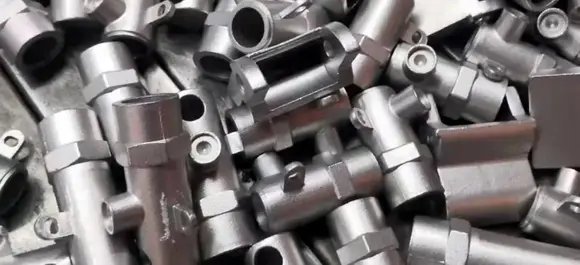Mobile:+86-311-808-126-83
Email:info@ydcastings.com
English
sand casting aluminum
Sand Casting Aluminum A Comprehensive Overview
Sand casting is a widely used metal casting process that has been employed for centuries to produce a variety of metal parts, and aluminum is one of the most popular materials used in this technique. The process involves creating a mold from a mixture of sand, clay, and water, into which molten aluminum is poured to form the desired shape. This article explores the process of sand casting aluminum, its benefits, applications, and considerations.
The Sand Casting Process
The sand casting process begins with the creation of a pattern, which is a replica of the final product. This pattern is typically made from materials such as wood, plastic, or metal. The pattern is then embedded in a sand mixture, which consists of fine sand, a bonding agent (usually clay), and water. This mixture is compacted around the pattern to form a mold.
Once the mold is prepared, the pattern is carefully removed, leaving a hollow cavity that will shape the aluminum. The mold is then assembled, ensuring that it is tightly sealed to prevent any molten metal from leaking. The next step involves heating aluminum until it reaches a molten state, typically at around 660 degrees Celsius (1220 degrees Fahrenheit). The molten aluminum is then poured into the mold through a pouring cup and runs through channels (sprues) designed for this purpose.
After the aluminum cools and solidifies, the mold is broken apart to reveal the casting. The finished aluminum part usually requires some degree of cleaning, which involves removing any sand remnants and excess material. Additional machining processes may be applied to achieve specific dimensional tolerances or surface finishes.
Advantages of Sand Casting Aluminum
sand casting aluminum

One of the primary advantages of sand casting is its versatility. This process can produce complex shapes with intricate details, making it suitable for a wide range of applications. Additionally, sand casting is cost-effective for both small and large production runs since the molds can be reused multiple times.
Aluminum itself is a lightweight and corrosion-resistant material, which contributes to the durability and longevity of the cast parts. Furthermore, aluminum can be alloyed with other metals, enhancing its mechanical properties for specific applications.
Applications
The applications of sand-cast aluminum are extensive. Industries such as automotive, aerospace, and general manufacturing frequently rely on this casting method. For instance, aluminum engine blocks, brackets, and housings are often produced using sand casting. The aircraft industry uses sand-cast aluminum components for structural parts because of its high strength-to-weight ratio.
Considerations
While sand casting has numerous advantages, there are some considerations to keep in mind. The surface finish of sand-cast components may not match that of parts produced through more advanced methods, such as die casting or investment casting. Additionally, the dimensional accuracy may be less precise, which can be a critical factor for certain applications.
In conclusion, sand casting aluminum is a fundamental manufacturing process with a rich history and a wide range of applications. It combines the advantages of versatility, cost-effectiveness, and the beneficial properties of aluminum, making it a preferred choice in many industries. As technology progresses, innovations in sand casting techniques may further enhance its capabilities, solidifying its place in the manufacturing landscape.
-
Materials Used in Manufacturing Cap End Pipe FittingsNewsNov.24,2025
-
Material Properties of CF8M CastingNewsNov.24,2025
-
How to Inspect Pump Cap Ends for DamageNewsNov.21,2025
-
Backward Curved Impeller – Efficient Airflow Solutions for Industry | YD CastingsNewsNov.21,2025
-
Automobile Water Pump - Efficient, Quiet, Durable & ElectricNewsNov.21,2025
-
Impeller for Pumps – High-Efficiency, Durable, OEM-ReadyNewsNov.21,2025











